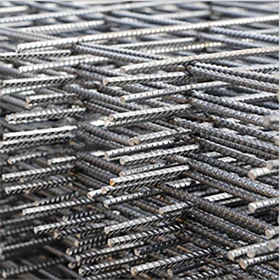Nov . 14, 2024 22:43 Back to list
steel mesh for concrete base
Steel Mesh for Concrete Bases Enhancing Strength and Durability
Concrete is one of the most widely used construction materials in the world, prized for its durability, strength, and versatility. However, on its own, concrete can be susceptible to cracking and deformation under stress. To enhance the structural integrity and longevity of concrete installations, the inclusion of steel mesh has become a standard practice in many construction projects. This article delves into the importance of steel mesh for concrete bases, its types, benefits, installation processes, and best practices.
Understanding Steel Mesh
Steel mesh, also known as welded wire fabric, consists of a grid of steel wires that are welded together at intervals. This grid is typically made from high-tensile strength steel, which provides increased resistance to stretching and breaking. Steel mesh is available in various sizes and configurations, allowing it to be tailored to the specific requirements of a project. It is primarily used to reinforce concrete in slabs, pavements, and retaining walls, among other applications.
Types of Steel Mesh
There are two primary types of steel mesh used in concrete construction welded wire mesh (WWM) and fiber-reinforced mesh.
1. Welded Wire Mesh (WWM) This type of mesh consists of longitudinal and transverse wires that are welded together at regular intervals. It is available in different gauges and spacing, making it versatile for various applications. WWM provides uniform support and load distribution throughout the concrete slab.
2. Fiber-Reinforced Mesh This variant incorporates synthetic or steel fibers into the concrete mix, enhancing its tensile strength and ductility. While not a replacement for traditional mesh, fiber reinforcement can complement it, improving crack resistance and overall performance.
Benefits of Using Steel Mesh
Incorporating steel mesh into concrete bases offers several significant benefits
1. Increased Tensile Strength Steel has a high tensile strength, which helps concrete withstand tensile forces and prevents cracking. This is particularly important in areas subject to heavy loads, dynamic stresses, or temperature variations.
2. Crack Control Concrete is prone to shrinkage cracking as it cures. Steel mesh helps to control the size and occurrence of these cracks by absorbing stress and redistributing loads, thus maintaining the integrity of the structure.
steel mesh for concrete base

3. Improved Load Distribution Steel mesh provides a structural framework that enhances the load distribution across the concrete slab. This is crucial for applications such as driveways, industrial floors, and pavements where heavy machinery may be used.
4. Durability and Longevity The combination of steel and concrete results in a highly durable material that can withstand harsh environmental conditions. This makes steel-reinforced concrete bases suitable for both indoor and outdoor applications, reducing the need for frequent repairs.
5. Cost-Effectiveness While the initial investment in steel mesh may increase the project budget, the long-term savings from reduced maintenance and increased lifespan of the concrete can offset these costs significantly.
Installation Process
The installation of steel mesh requires careful planning and execution. Here are the key steps involved
1. Site Preparation The site must be cleared and leveled to ensure an even base for the concrete. Proper drainage systems should also be considered.
2. Formwork Setup Forms are constructed to hold the concrete in place. These can be made from wood, metal, or plastic.
3. Reinforcement Placement The steel mesh is laid flat within the formwork. It is crucial to position the mesh correctly, typically halfway within the thickness of the slab, to maximize its effectiveness.
4. Concrete Pouring Once the mesh is in place, concrete is poured into the forms. Care must be taken to avoid displacing the mesh during pouring.
5. Compacting and Finishing After pouring, the concrete should be compacted to remove air pockets and ensure proper bonding with the steel mesh. Finally, finishing techniques can be applied to achieve the desired surface characteristics.
Conclusion
Incorporating steel mesh into concrete bases is an essential practice to improve strength, durability, and longevity. By understanding the types and benefits of steel mesh, construction professionals can enhance their projects’ overall performance and reliability. As construction technologies evolve, the combination of steel mesh and concrete will continue to play a pivotal role in building resilient infrastructures that meet modern demands.
-
Reinforcing Mesh: Core Material of the Construction Industry
NewsJul.07,2025
-
Welded Wire Fabric Reinvented for Modern Projects
NewsJul.04,2025
-
Superiority of Stainless Steel Woven Mesh
NewsJul.04,2025
-
Key Types of Razor Wire and Their Applications
NewsJul.04,2025
-
Durable Metal Fence Types for Security
NewsJul.04,2025
-
Best Materials for Livestock Fence
NewsJul.04,2025
products.







